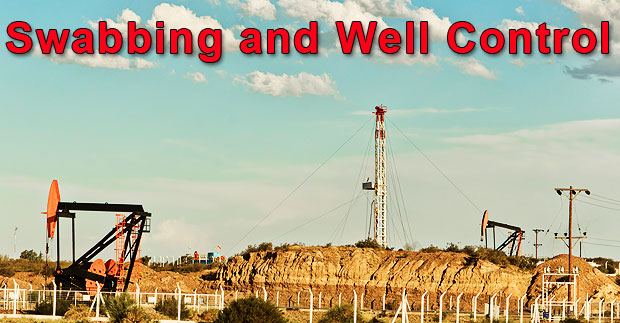There are several situations when a kick is induced by swabbing effect. Today, we are going to discuss swabbing and well control situation. Swabbing is a condition when the string is pulled out of the well and it creates temporary bottom hole pressure reduction. If the hydrostatic pressure reduction is large enough to create underbalance condition, the well will eventually flow.

When you swab the fluid in, the swabbed fluid may not necessarily cause pit gain or the well flowing because the volume swabbed in is not significant. However, if you have several swabbed-in fluid, the well will finally flow.

Figure 1 – Take Swabbed Kick
It is quite tricky to recognize the swabbing volume and the most trustable method to detect is by tracking hole fill volume. For example, if the volume displacement for 10 stands pulled is 8 bbl but the hole fill volume is just only 6 bbl, 2 bbls of kick may possibly be swabbed in while tripping out. Once the swabbing is detected, you need to trip back to the bottom and circulate bottom up even though the well is not flowing. If you don’t go back to the bottom, it will be very difficult to control the well off bottom once the swabbed gas moves up to shallower depth of the well. Continue reading








